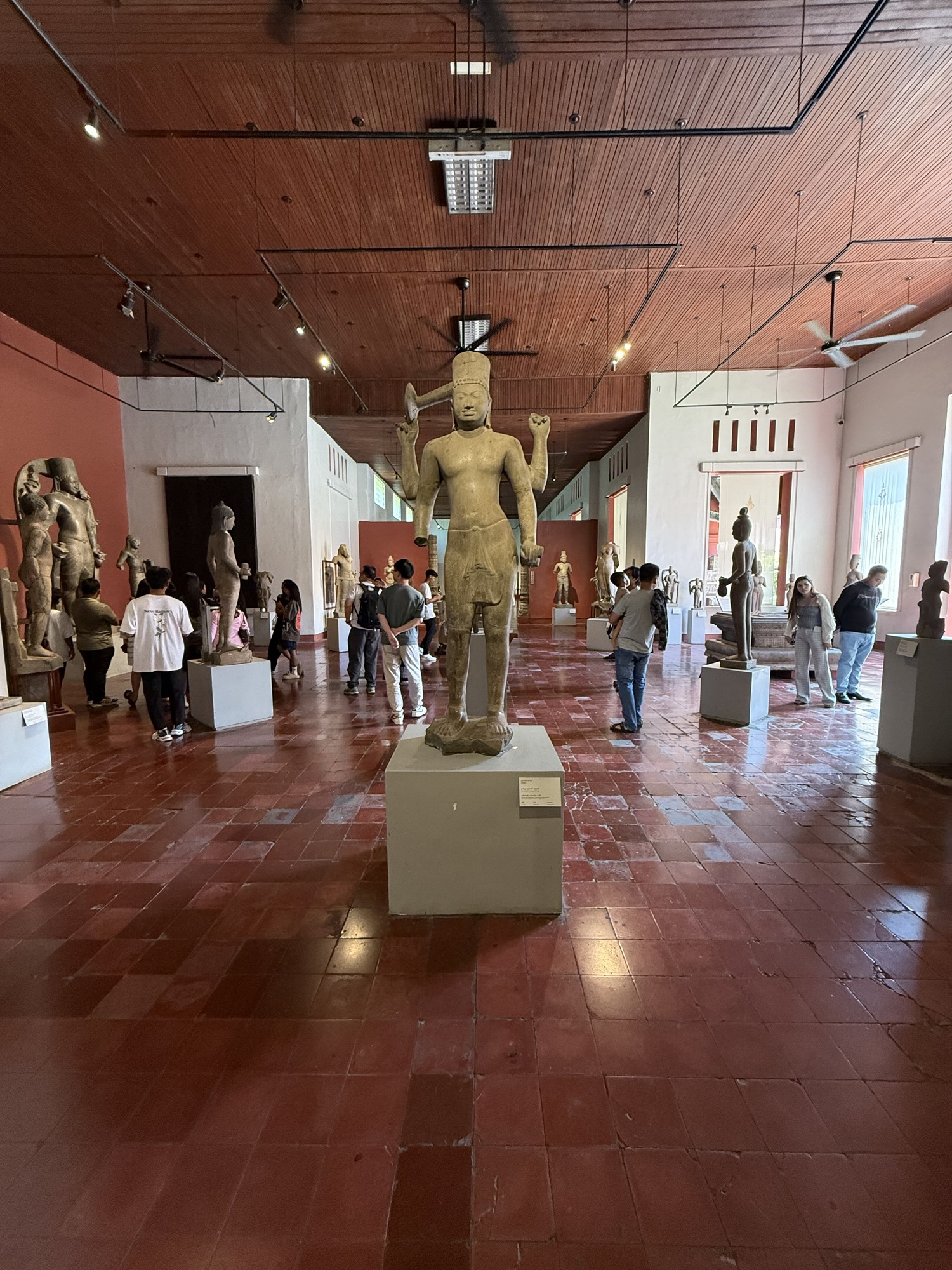The National Museum of Cambodia suspended time and as well as the relentless heat, when I visited over the weekend. Sticking around in Phnom Penh for a few days following a work conference, I wanted to explore Cambodian culture through its food scene, and of course, its museum.
Home to one of the largest collections of Khmer and pre-Khmer objects, one of the first items that caught my eye as I wandered the “prehistoric wing” was a slab of stone, modest and worn. No dramatic story, just a few words etched in an ancient language that likely contained a donor list or an inventory.

I felt wonder that the stone had survived and made it to its current resting place, making it, intact, through centuries of nature being nature, civilisations coming and going, the brutal Khmer Rouge (who took many of the museums lives). I felt sadness for the hands that carved it. Hands now dust, their names and histories completely removed from memory. And I felt a quiet, overwhelming gratitude to be alive and bearing witness to it.
I don’t have credentials in history, but I love pausing in museums and ruins, imagining the lives behind the objects. I wonder what they hoped for, what they feared, what dreams they had. Zooming out, I think of the civilisations the collections are a part of – born, grown, maturing and eventually collapsing, becoming photo backdrops for strangers centuries later.
I’m not nihilistic at all, but when I spend time in these spaces, I feel two things at once. First, nothing I do today will matter at some point (relatively soon, in the grand scheme of things). Second, precisely because of that, I should do what causes the least harm and most benefit to those around me.
There’s the phrase “Live like today is your last”, but what if we also lived like our choices, however small, would ripple across centuries and millennia? What if the way we treat people and build things mattered less for ‘legacy’, but rather because a generations from now, someone or something may still be living with the echoes of our actions? Perhaps it should be “Live like today is your last, and as if your choices will shape lives for the next thousand years”. How can we be good ancestors?
You can’t visit Cambodia without soaking in the brilliance of the Hindu-Buddhist empire that created one of the most incredible testaments of human ingenuity, Angkor Wat, and that it coexists with the truly unfathomable trauma of the Khmer Rouge. Millions of futures stolen in just a handful of years. And yet Cambodia endures. The museum, rebuilt in 1979 after the end of the brutal 4-year regime, is a monument to resilience of Cambodian people.

One of the last rooms I visited had rows of Buddhas statues from several eras of the region. Styles changed, but their hand gestures, ‘mudras’, were consistent. I had to look them up on ChatGPT to learn what they meant: Fearlessness, teaching, meditation. The form adapted to the times, but the messages didn’t. In a world of constant change, one can choose calm, kindness, forgiveness.
My 4-day break in PNH was meant to be restorative – I got through 1.5 books in several cafes and ate my way through town, after all. But my couple of hours in the museum was the most meaningful, a reminder to be a part of the long, quiet continuum of people trying to leave the world a bit better than when they found it.
Now, if you’re wondering where I ate and read my books, here’s my list of spots I’d recommend. Many thanks to the friends who shared or took me to some of these places.
Backyard Cafe: decent coffee, super healthy food, and wonderful tropical chic ambience.
Sombok: Khmer fine dining, run by an all-women team and legendary executive chef, Kimsan Pol.
Kravanh: Elegent, classic Khmer cuisine in a beautiful colonial mansion. I had Snail here, and it was marvellous.
Eleven One Kitchen: fresh homemade food in a lush garden-like space with an open kitchen.
Cafe Malaya: a family-owned Malaysian restaurant with a wonderful, soul-nourishing buffet.
Addis Ethiopian Restaurant: not in a million years would I expect to have the best injera and Ethiopian curries I’ve ever had in Cambodia, but there you go. Superb, fresh flavours.
Cuisine Wat Damak: French Cambodian fusion, one of Asia’s 50 best restaurants (and whose 3-course set lunch costs under USD20 as of May 2025!).







Leave a Reply